Abstract
1. Using single fibre vagal afferent recording, we have studied the behavior of slowly adapting stretch receptors located in an isolated, in situ, segment of the trachea in dogs. Responses to positive and negative steady and oscillating transmural pressures were investigated. 2. Seventy-eight per cent of the receptors studied were tonically active at resting tracheal volume. Ninety per cent showed a more pronounced response to positive than to negative transmural pressures. 3. During pressure oscillations the majority of the receptors had a higher discharge frequency at any given pressure during the ascending phase of the pressure wave than at the same pressure under static conditions. During most of the ensuing descent of pressure toward zero the discharge frequency led transmural pressure. 4. With increasing frequency of oscillation the differences from the static responses increased (dP/dt sensitivity), especially during the ascending limb of the pressure oscillation (rectifying behavior). 5. In a small number of receptors, discharge frequency lagged behind transmural pressure or was in phase with it ("no loop" pattern). 6. In three cases the same receptor exhibited dP/dt sensitivity during positive pressure oscillations, whereas discharge frequency lagged behind pressure during negative pressure oscillations. This indicates that the lack of dP/dt sensitivity exhibited under negative pressure conditions does not represent an intrinsic property of these receptors, but reflects some aspect of their mechanical arrangement within the airway wall. 7. THESE PATTERNS OF RESPONSE ARE DISCUSSed in terms of intrinsic and extrinsic characteristics of the receptors. 8. The physiological implications of stretch receptor behaviour are also considered.
Full text
PDF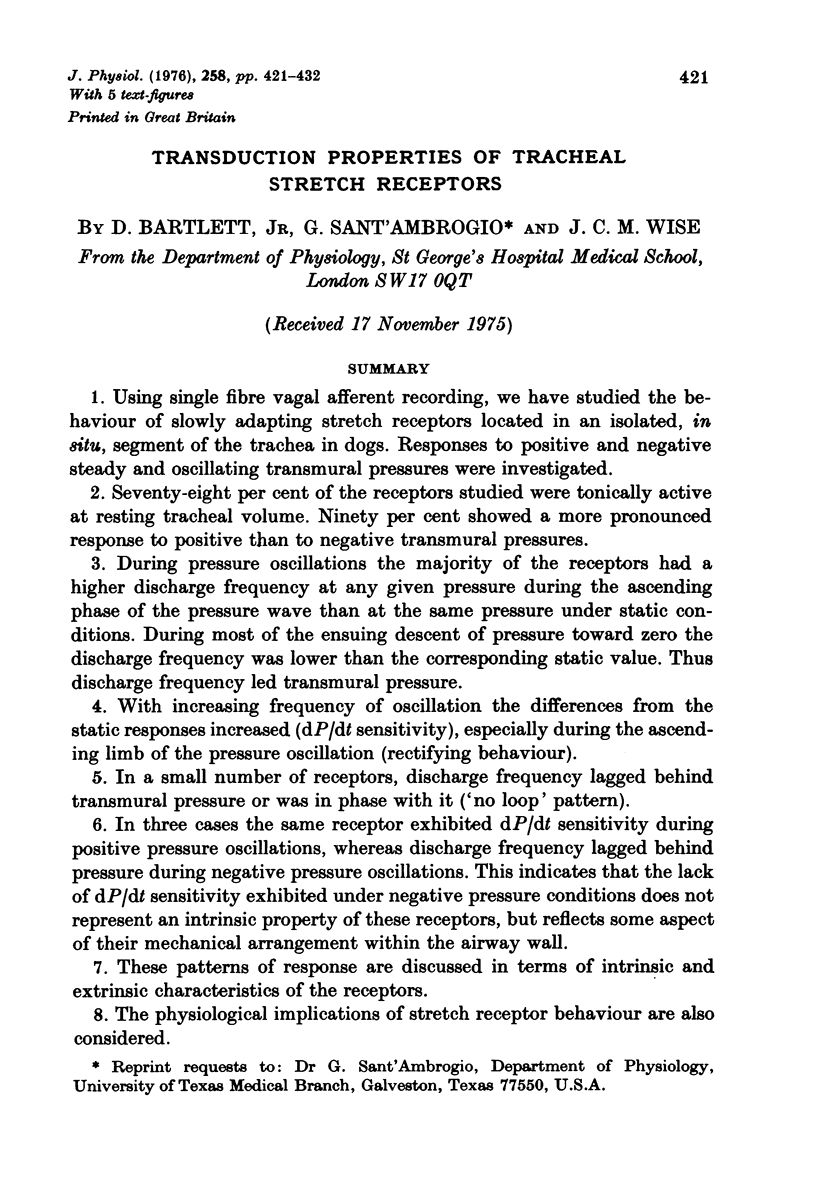
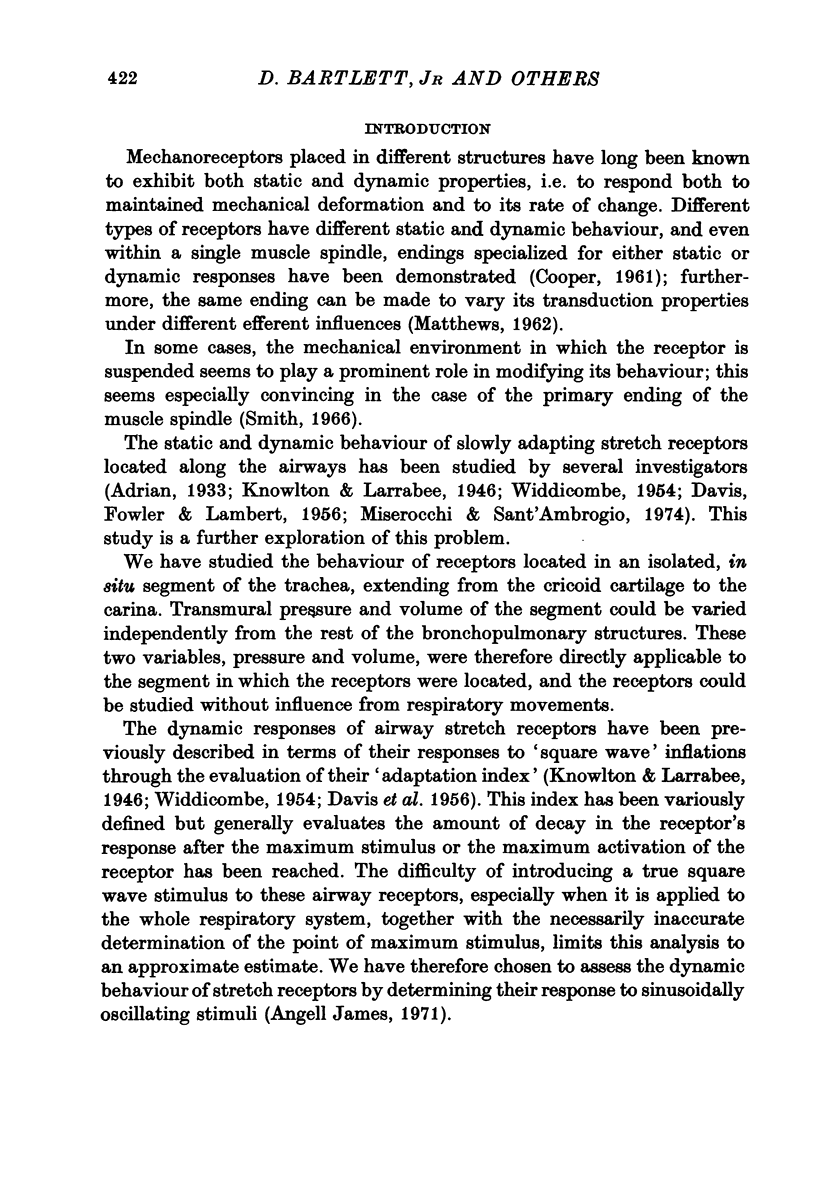
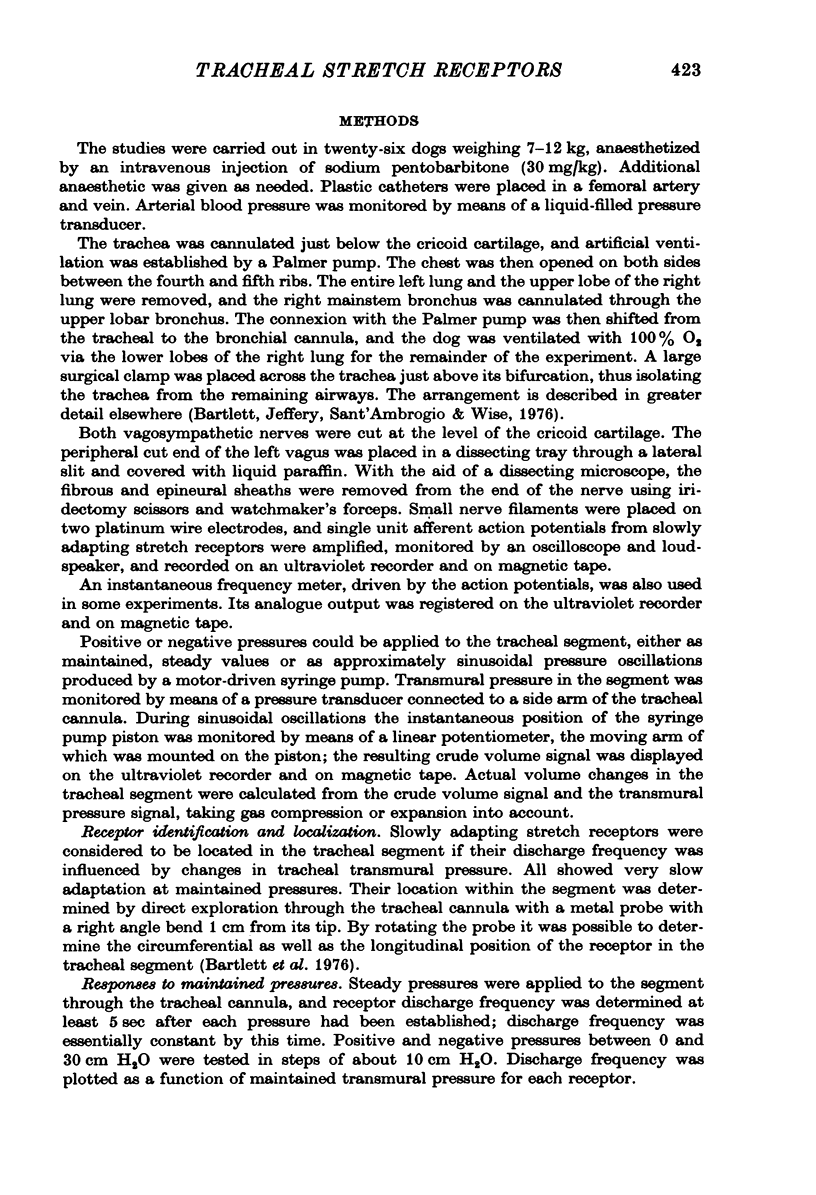
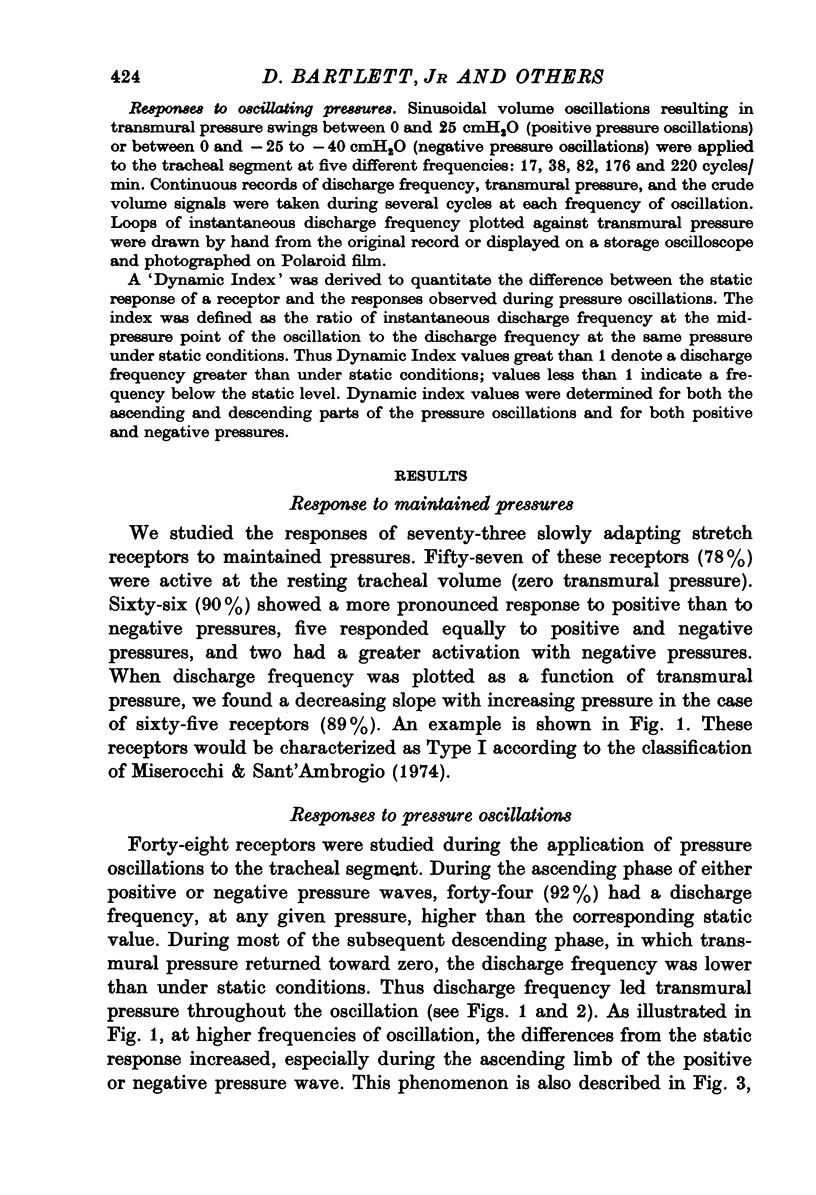
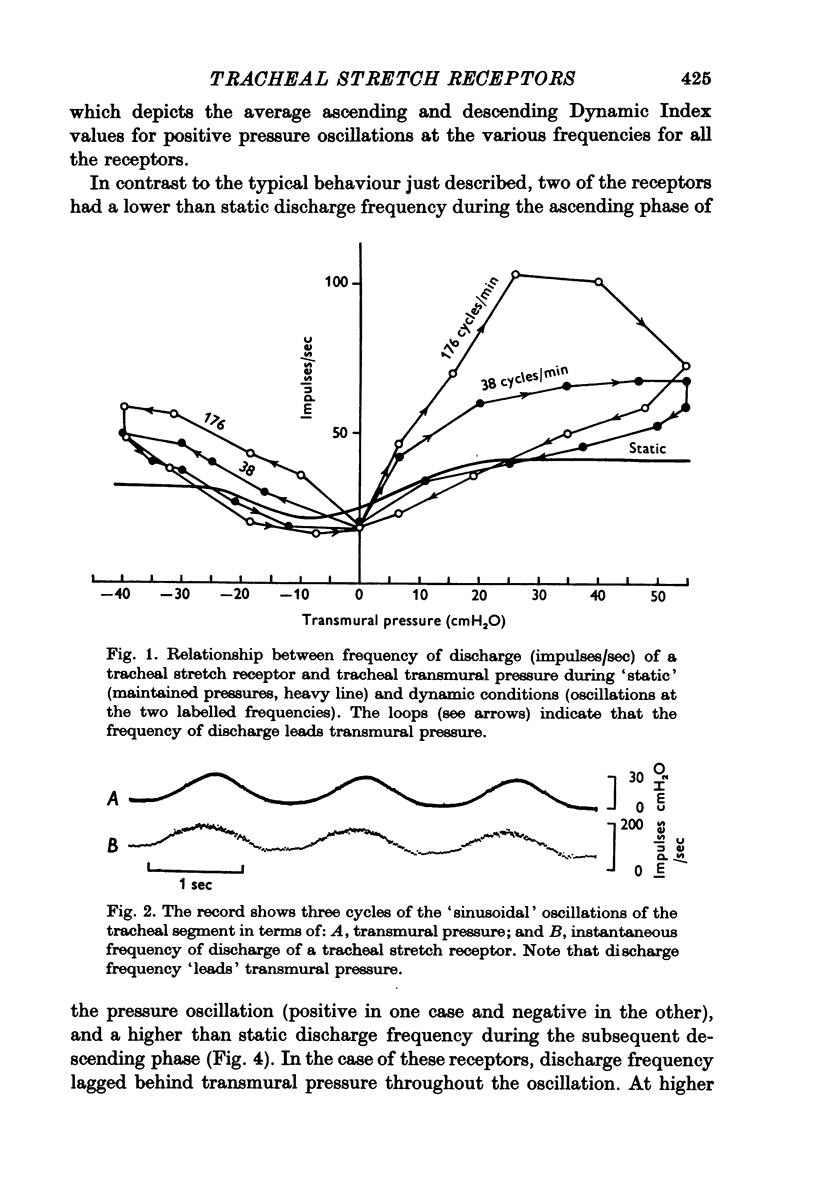
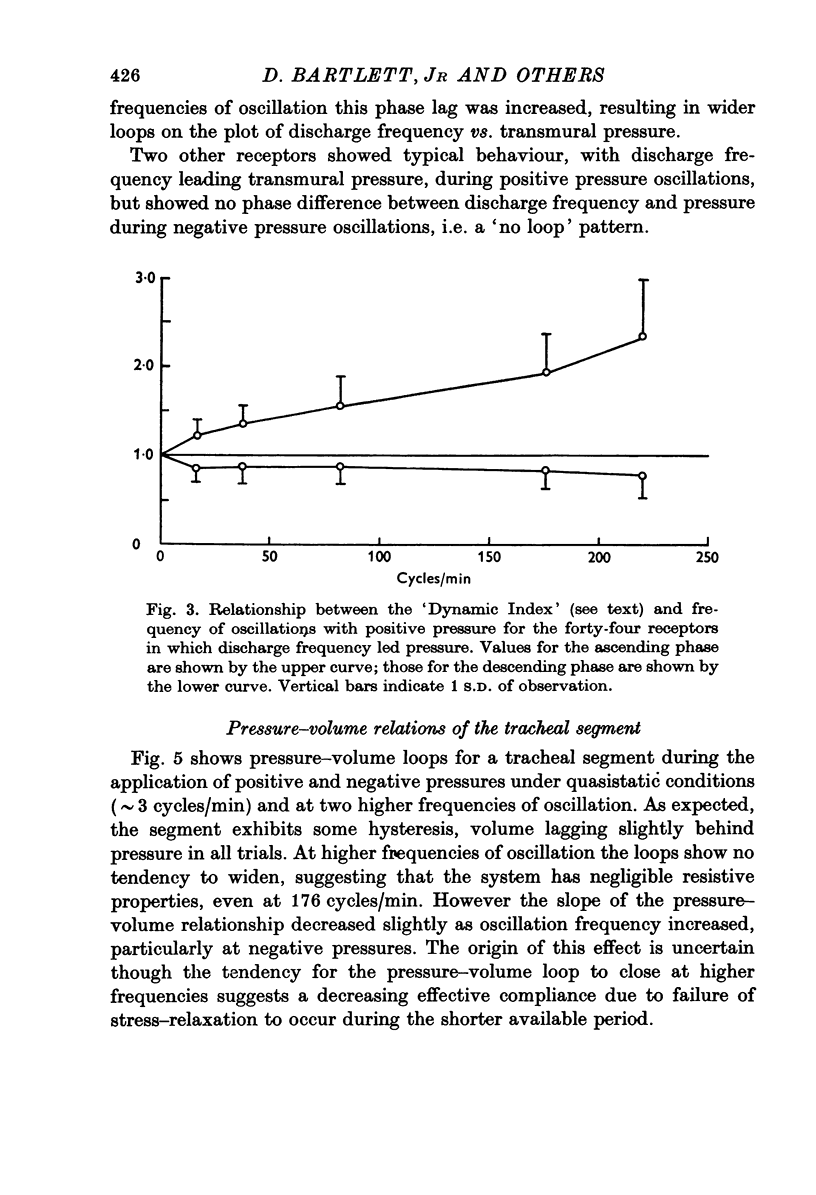
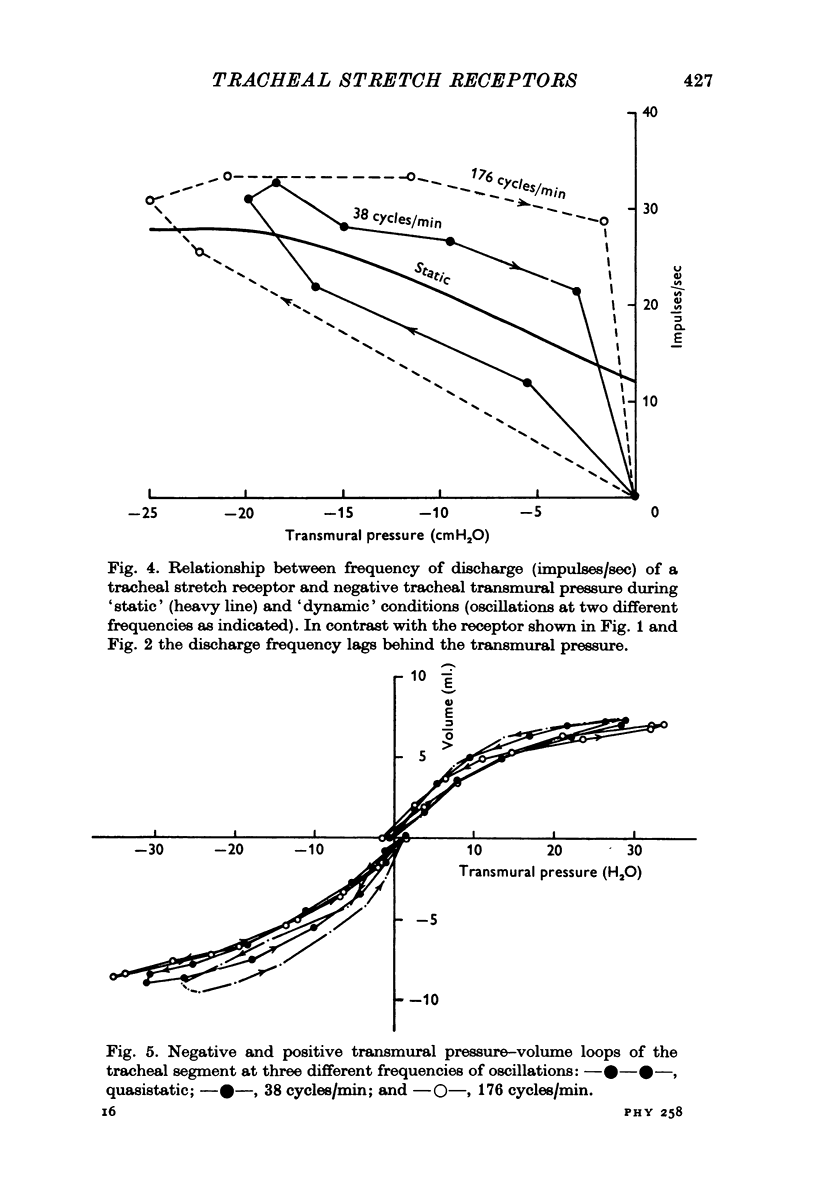
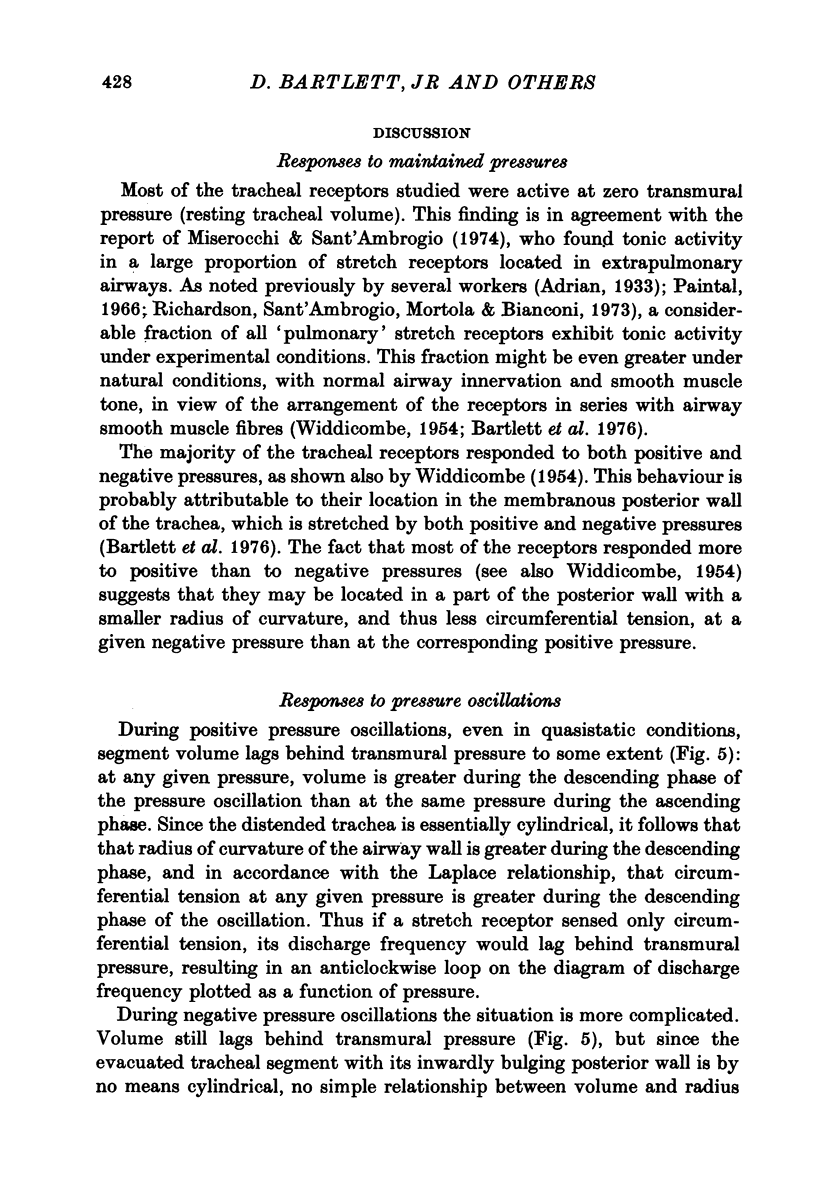
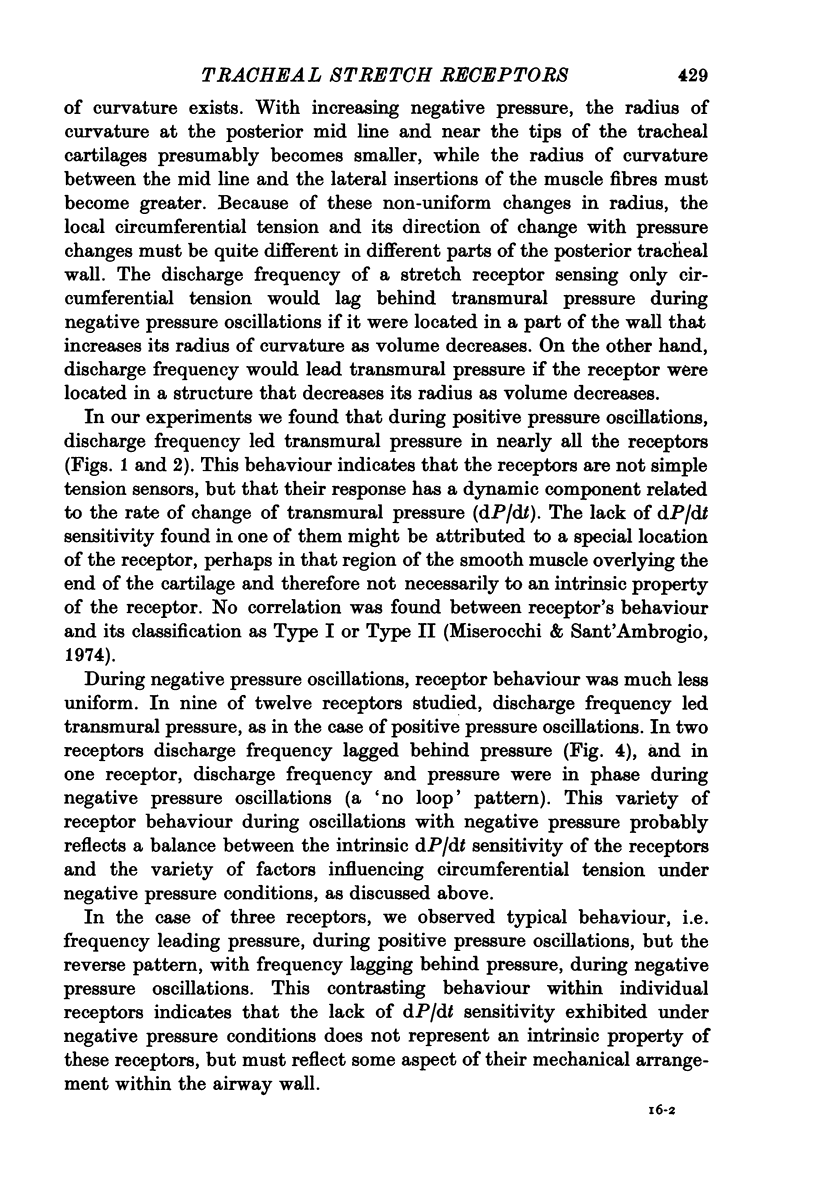
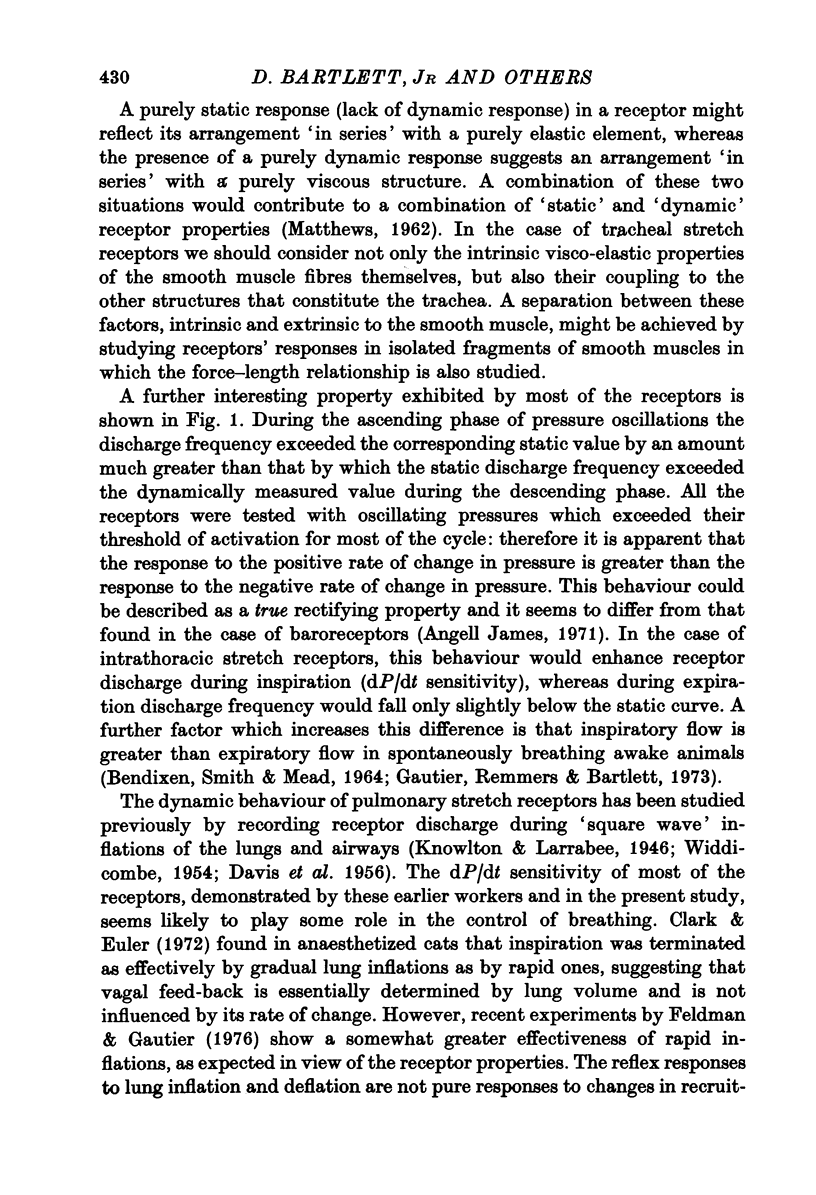
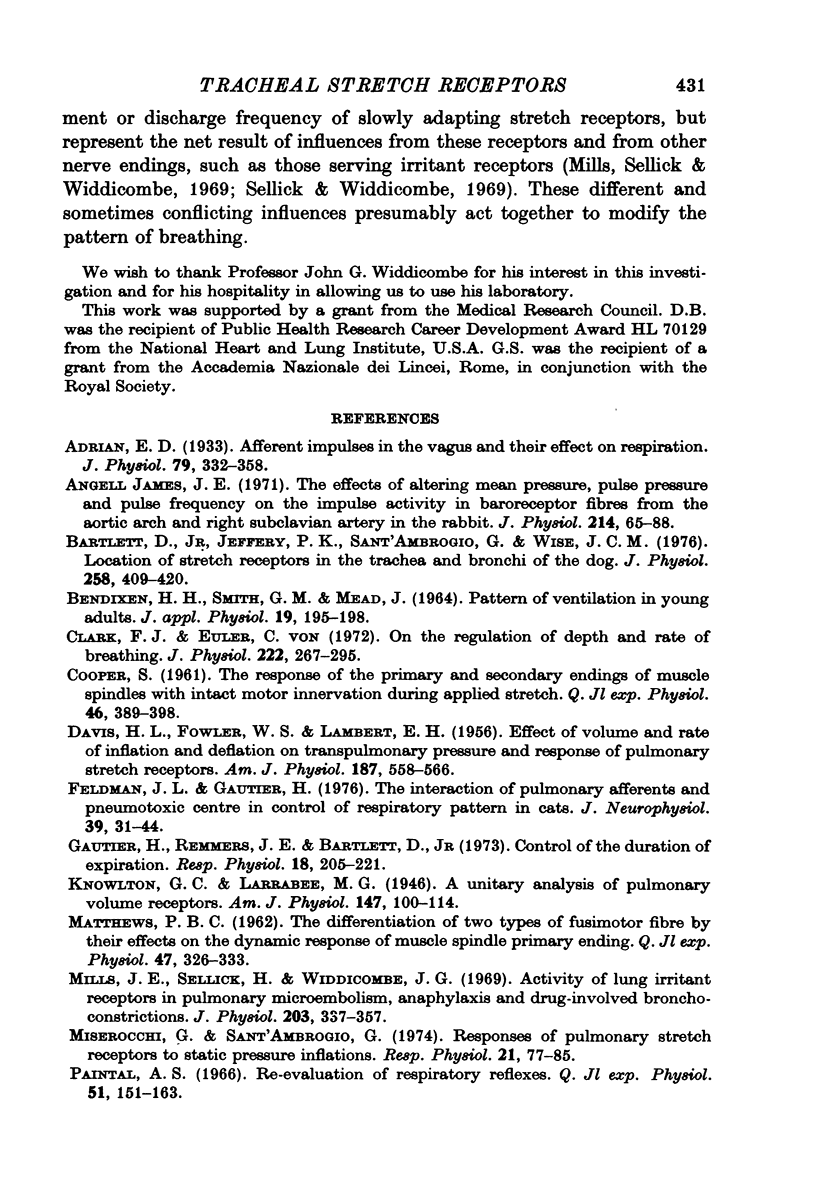
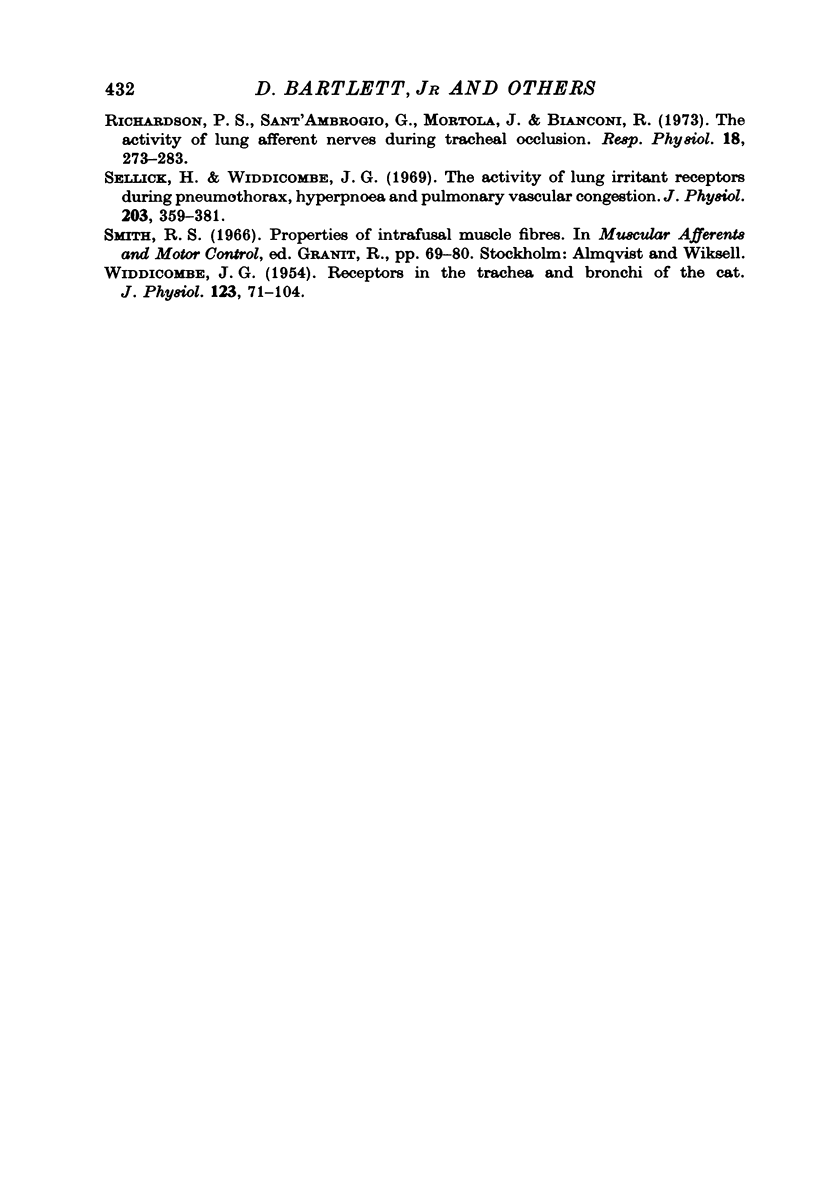
Selected References
These references are in PubMed. This may not be the complete list of references from this article.
- Adrian E. D. Afferent impulses in the vagus and their effect on respiration. J Physiol. 1933 Oct 6;79(3):332–358. doi: 10.1113/jphysiol.1933.sp003053. [DOI] [PMC free article] [PubMed] [Google Scholar]
- Angell James J. E. The effects of altering mean pressure, pulse pressure and pulse frequency on the impulse activity in baroreceptor fibres from the aortic arch and right subclavian artery in the rabbit. J Physiol. 1971 Apr;214(1):65–88. doi: 10.1113/jphysiol.1971.sp009419. [DOI] [PMC free article] [PubMed] [Google Scholar]
- BENDIXEN H. H., SMITH G. M., MEAD J. PATTERN OF VENTILATION IN YOUNG ADULTS. J Appl Physiol. 1964 Mar;19:195–198. doi: 10.1152/jappl.1964.19.2.195. [DOI] [PubMed] [Google Scholar]
- Bartlett D., Jr, Jeffery P., Sant'ambrogio G., Wise J. C. Location of stretch receptors in the trachea and bronchi of the dog. J Physiol. 1976 Jun;258(2):409–420. doi: 10.1113/jphysiol.1976.sp011427. [DOI] [PMC free article] [PubMed] [Google Scholar]
- COOPER S. The responses of the primary and secondary endings of muscle spindles with intact motor innervation during applied stretch. Q J Exp Physiol Cogn Med Sci. 1961 Oct;46:389–398. doi: 10.1113/expphysiol.1961.sp001558. [DOI] [PubMed] [Google Scholar]
- Clark F. J., von Euler C. On the regulation of depth and rate of breathing. J Physiol. 1972 Apr;222(2):267–295. doi: 10.1113/jphysiol.1972.sp009797. [DOI] [PMC free article] [PubMed] [Google Scholar]
- DAVIS H. L., FOWLER W. S., LAMBERT E. H. Effect of volume and rate of inflation and deflation on transpulmonary pressure and response of pulmonary stretch receptors. Am J Physiol. 1956 Dec;187(3):558–566. doi: 10.1152/ajplegacy.1956.187.3.558. [DOI] [PubMed] [Google Scholar]
- Feldman J. L., Gautier H. Interaction of pulmonary afferents and pneumotaxic center in control of respiratory pattern in cats. J Neurophysiol. 1976 Jan;39(1):31–44. doi: 10.1152/jn.1976.39.1.31. [DOI] [PubMed] [Google Scholar]
- Gautier H., Remmers J. E., Bartlett D., Jr Control of the duration of expiration. Respir Physiol. 1973 Jul;18(2):205–221. doi: 10.1016/0034-5687(73)90051-0. [DOI] [PubMed] [Google Scholar]
- Mills J. E., Sellick H., Widdicombe J. G. Activity of lung irritant receptors in pulmonary microembolism, anaphylaxis and drug-induced bronchoconstrictions. J Physiol. 1969 Aug;203(2):337–357. doi: 10.1113/jphysiol.1969.sp008867. [DOI] [PMC free article] [PubMed] [Google Scholar]
- Miserocchi G., Sant'Ambrogio G. Responses of pulmonary stretch receptors to static pressure inflations. Respir Physiol. 1974 Jul;21(1):77–85. doi: 10.1016/0034-5687(74)90009-7. [DOI] [PubMed] [Google Scholar]
- Paintal A. S. Re-evaluation of respiratory reflexes. Q J Exp Physiol Cogn Med Sci. 1966 Apr;51(2):151–163. doi: 10.1113/expphysiol.1966.sp001836. [DOI] [PubMed] [Google Scholar]
- Richardson P. S., Sant'Ambrogio G., Mortola J., Bianconi R. The activity of lung afferent nerves during tracheal occlusion. Respir Physiol. 1973 Jul;18(2):273–283. doi: 10.1016/0034-5687(73)90056-x. [DOI] [PubMed] [Google Scholar]
- Sellick H., Widdicombe J. G. The activity of lung irritant receptors during pneumothorax, hyperpnoea and pulmonary vascular congestion. J Physiol. 1969 Aug;203(2):359–381. doi: 10.1113/jphysiol.1969.sp008868. [DOI] [PMC free article] [PubMed] [Google Scholar]
- WIDDICOMBE J. G. Receptors in the trachea and bronchi of the cat. J Physiol. 1954 Jan;123(1):71–104. doi: 10.1113/jphysiol.1954.sp005034. [DOI] [PMC free article] [PubMed] [Google Scholar]


